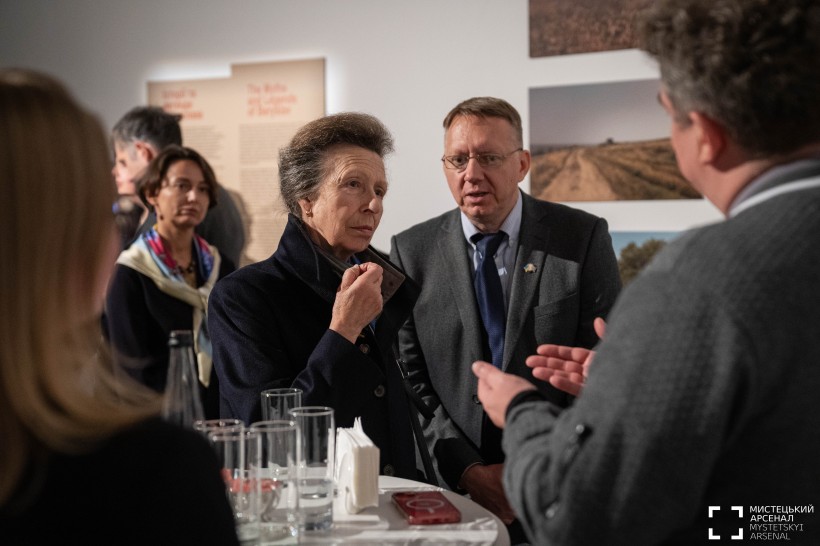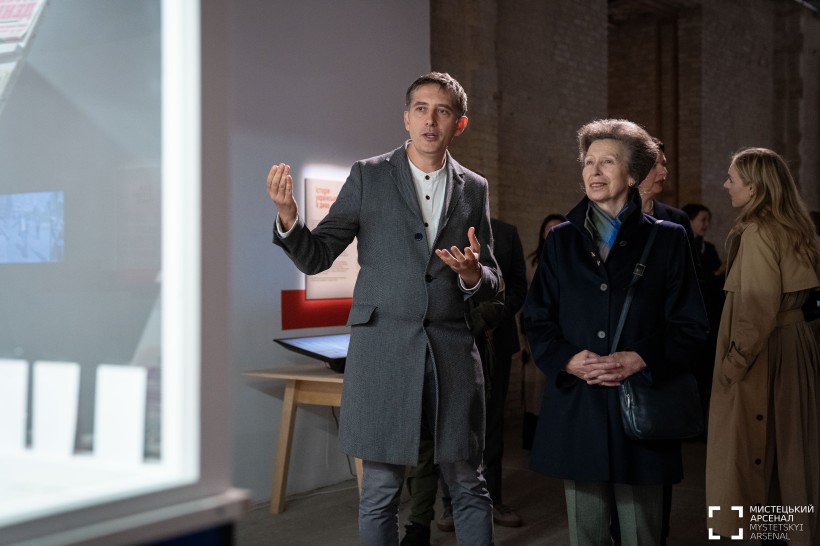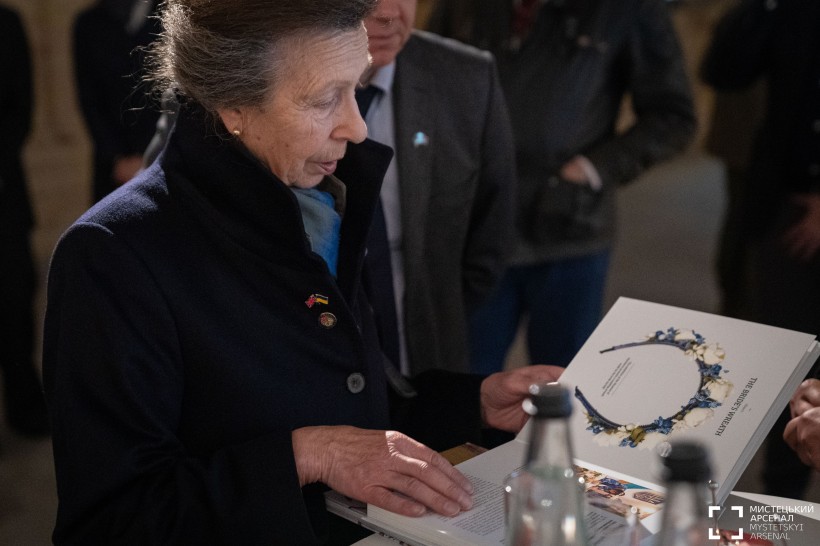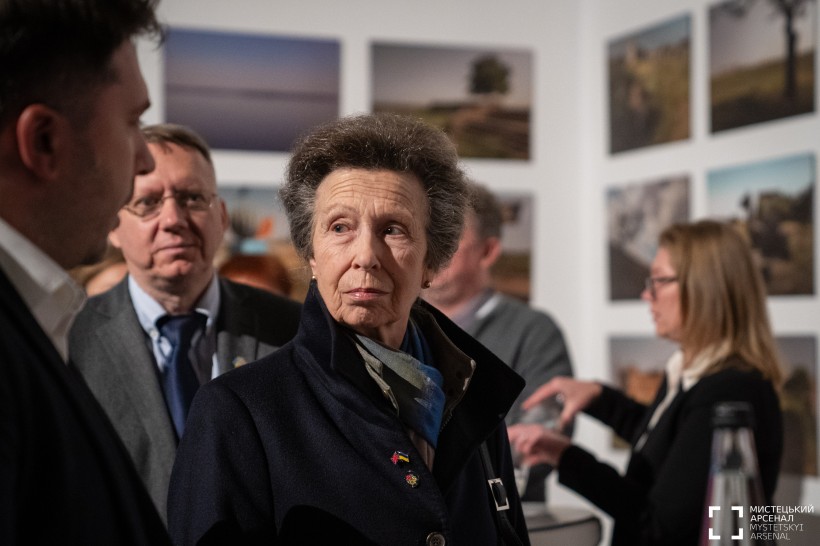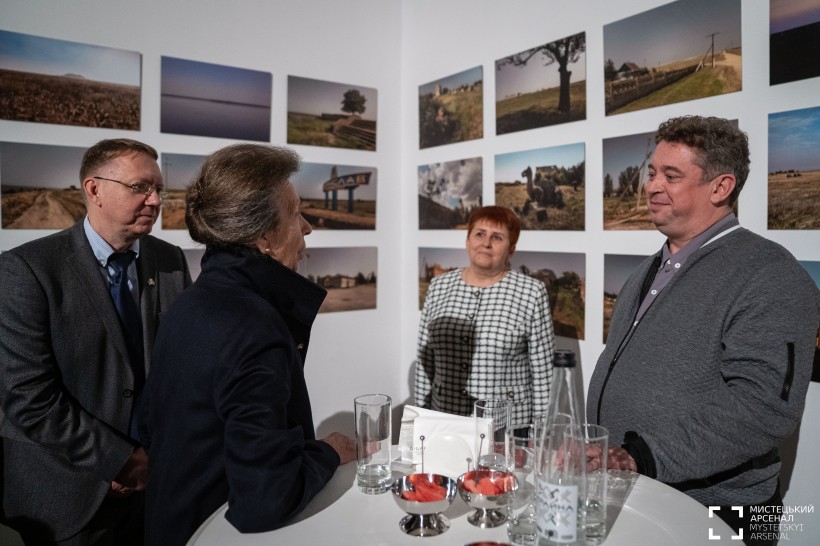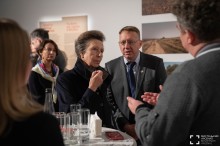
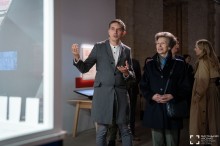


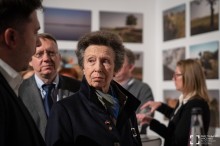

Kyiv. It is a warm October. The Mystetskyi Arsenal space is filled with the hum of people's voices, the soft light of the exhibition, memories of the south of Ukraine woven into art, conversations, and silence. And among this is the unexpected presence of a distinguished guest. Her Royal Highness Princess Anne, who is a patron of humanitarian and cultural affairs, made an unannounced visit to the exhibition "Kherson: The Steppe Holds".
The exhibition was not only an artistic event. It is like a space of memory, where those who not only create culture but also keep it alive like a fire in difficult times gathered. Among them is Oleksandr Kashlakov, the head of the NGO "Zadzerkallia", a representative of Donetsk region, who had the opportunity to personally share the story of the project that grew up at the intersection of loss and hope - "Roots and Wings: Young Energy of Culture".
After 2022, Kirovohrad region became a new home for thousands of people from eastern Ukraine. Many of them are young, active, and creative. But resettlement is not just a change of address. It is a break with the land where you grew up, where you heard your native dialect, where your first dreams were created.
According to official data, more than 18 thousand young IDPs now live in Kirovohrad region. And if you imagine this figure, these are entire generations caught between a past that hurts and a future that has not yet been built.
"Roots and Wings is not just a cultural project. It's an attempt to give support to those who didn't know if they would be able to create again. It is a platform where young people from Donetsk region can preserve their identity, tell their story, and find a new voice.
The event highlighted an important point: displaced youth face challenges every day - uncertainty of the future, fear of assimilation, and the risk of losing touch with their cultural roots. While local young people often choose to migrate abroad or to big cities, internally displaced young people remain in Kirovohrad region. And it is they who can become agents of positive change, provided they are properly supported and engaged.
That is why such initiatives are vital. They bring together local cultural and educational institutions, youth centers, and public organizations. They create spaces where we can talk about memory, trauma, and common identity. And most importantly, they allow young people not just to "survive," but to live, create, and influence.
Participation in the event with HRH Princess Anne is not just a symbolic event. It is an opportunity to tell the world that Ukrainian culture has not broken down. It has moved, adapted, and... started to take new roots.
"For us, it was not about participating in a diplomatic event, but about trust. It was about the opportunity to say: 'Donetsk region is alive. We are here. We continue to hold on to our culture. And we want to be part of a big conversation about the future of Ukraine," says Oleksandr.
We are sincerely grateful to everyone who creates opportunities for such meetings and dialogues. Each story heard in the silence of the exhibition hall is another step towards understanding that culture is not only about the muse. It is about people who survived. And not only survived, but retained the strength to create further.
The context where Donetsk region and the British monarchy met seems symbolic. Because it is about respect for dignity. About the power of history. And about the fact that even in the darkest times we keep the light.
This exhibition is supported by the ERSTE Foundation and the Partnership for a Strong Ukraine program, funded by the governments of Canada, Estonia, Finland, Norway, Sweden, Switzerland, and the United Kingdom.
Photo: Andriy Tsykota
